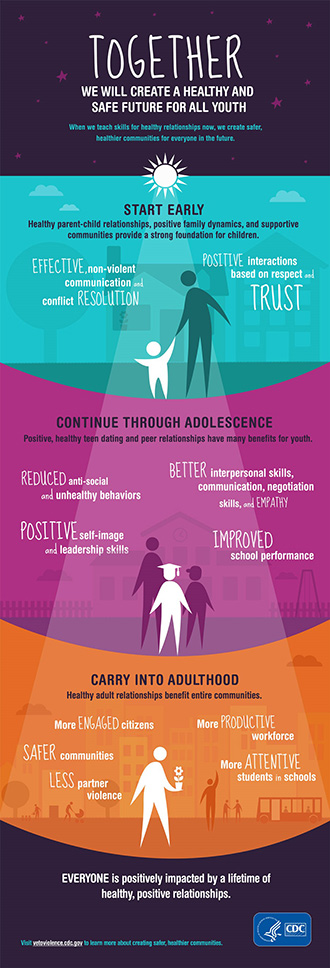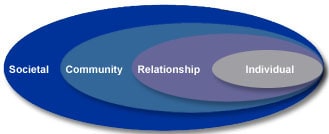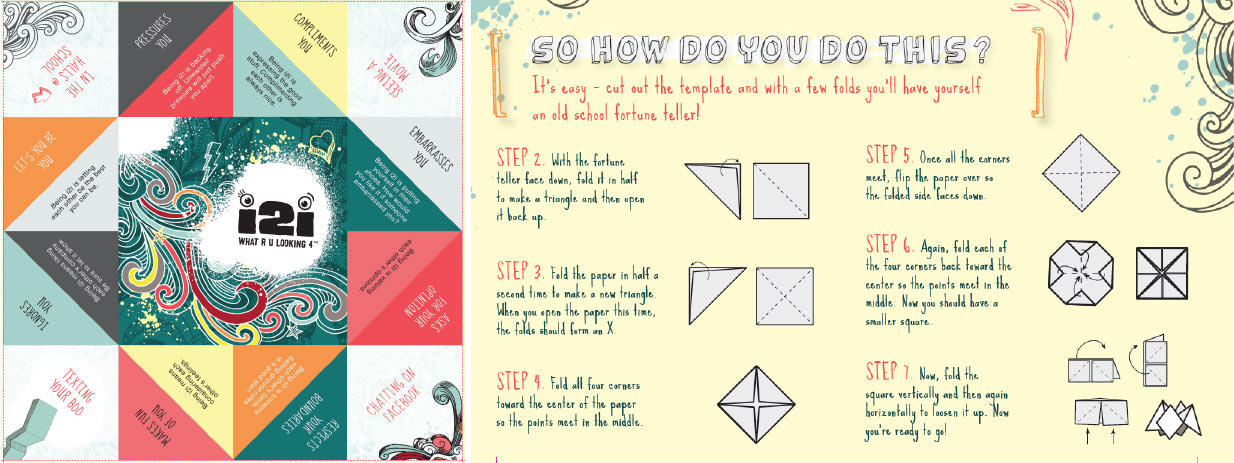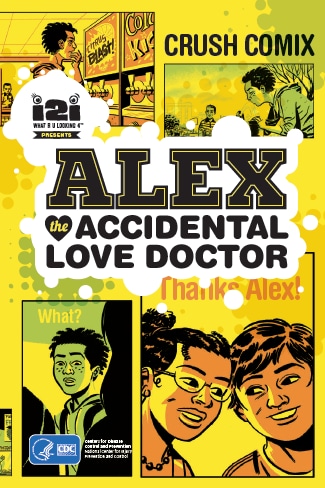Teen Newsletter: March 2021 – Teen Dating Violence
The David J. Sencer CDC Museum (CDCM) Public Health Academy Teen Newsletter was created to introduce teens to public health topics. Each month will focus on a different public health topic that CDC studies. Newsletter sections are: Introduction, CDC’s Work, The Public Health Approach, Special Feature, Out of the CDC Museum Collection, and Activities.
Be sure to join our live Newsletter Zoom on March 30, 2021, at 8pm, and check out all the activities (digital scavenger hunt—Goosechase, Zoom, social media challenge, and Ask a CDCer) at the end of each newsletter. Join in on the fun and win some prizes! Also, be on the lookout for the recently added activity, a pre-Zoom game (Kahoot) that will be emailed the day of the Zoom.
Look for the recently added newsletter activity prize category: Future CDCer. Learn more below.
Introduction – Teen Dating Violence
What Is Teen Dating Violence?
Teen dating violence (TDV) is a type of intimate partner violence (IPV). It occurs between two people in a close relationship.
Teen dating violence (TDV) includes four types of behavior:
- Physical violence is when a person hurts or tries to hurt a partner by hitting, kicking, or using another type of physical force.
- Sexual violence is forcing or attempting to force a partner to take part in a sex act, sexual touching, or a non-physical sexual event (e.g., sexting) when the partner does not or cannot consent.
- Psychological aggression is the use of verbal and non-verbal communication with the intent to harm another person mentally or emotionally and/or exert control over another person.
- Stalking is a pattern of repeated, unwanted attention and contact by a partner that causes fear or concern for one’s own safety or the safety of someone close to the victim.
Teen dating violence (TDV), also referred to as “dating violence,” can take place in person or electronically, such as repeated texting or posting sexual pictures of a partner online without consent. Unhealthy relationships can start early and last a lifetime. Teens often think some behaviors, like teasing and name-calling, are a “normal” part of a relationship, but these behaviors can become abusive and develop into serious forms of violence. However, many teens do not report unhealthy behaviors because they are afraid to tell family and friends.
How Big Is The Problem?
Teen dating violence is common. It affects millions of teens in the U.S. each year. You learned about CDC’s Youth Risk Behavior Survey (YRBS) in the September 2020 Teen Newsletter. Data from YRBS and the National Intimate Partner and Sexual Violence Survey indicate that:
- Nearly 1 in 11 female and approximately 1 in 15 male high school students report having experienced physical dating violence in the last year.
- About 1 in 9 female and 1 in 36 male high school students report having experienced sexual dating violence in the last year.
- 26% of women and 15% of men who were victims of contact sexual violence, physical violence, and/or stalking by an intimate partner in their lifetime first experienced these or other forms of violence by that partner before age 18.
The burden of TDV is not shared equally across all groups — sexual minority groups are disproportionately affected by all forms of violence, and some racial/ethnic minority groups are disproportionately affected by many types of violence.

What Are the Consequences?
Unhealthy, abusive, or violent relationships can have severe consequences and short-and long-term negative effects on a developing teen. For example, youth who are victims of TDV are more likely to:
- Experience symptoms of depression and anxiety
- Engage in unhealthy behaviors, like using tobacco, drugs, and alcohol
- Exhibit antisocial behaviors, like lying, theft, bullying, or hitting
- Think about suicide
Violence in an adolescent relationship sets the stage for problems in future relationships, including intimate partner violence and sexual violence perpetration and/or victimization throughout life. For example, youth who are victims of dating violence in high school are at higher risk for victimization during college.
How Can We Stop Teen Dating Violence Before It Starts?
Supporting the development of healthy, respectful, and nonviolent relationships has the potential to reduce the occurrence of TDV and prevent its harmful and long-lasting effects on individuals, their families, and the communities where they live. During the pre-teen and teen years, it is critical for youth to begin learning the skills needed to create and maintain healthy relationships. These skills include things like how to manage feelings and how to communicate in a healthy way.
CDC’s Work – Teen Dating Violence
CDC is engaged in ongoing research and programmatic activities for expanding the research evidence and adding to the knowledge base of effective primary prevention programs, policies, and practices available to communities for preventing interpersonal violence among youths.
In 1979, the U.S. Surgeon General identified violent behavior as a key public health priority. In 1980, CDC began studying patterns of violence. Visit Out of the CDC Museum Collection to see how CDC’s earliest work in the field of violence prevention was documented in new articles.
CDC’s work grew into a national program to reduce the death and disability associated with injuries outside the workplace. In 1992, CDC established the National Center for Injury Prevention and Control (NCIPC) as the lead federal organization for violence prevention. The Division of Violence Prevention (DVP) is one of three divisions within NCIPC. Its mission is to prevent violence and its consequences so that all people, families, and communities are safe, healthy, and free of violence.
DVP is committed to stopping violence before it begins (i.e., primary prevention), including teen dating violence. The division works to:
- Monitor violence-related behaviors, injuries, and deaths
- Conduct research on the factors that put people at risk or protect them from violence
- Create and evaluate the effectiveness of violence prevention programs, practices, and policies
- Help state and local partners plan, implement, and evaluate violence prevention efforts
- Promote the effective adoption and dissemination of violence prevention strategies
Another area of CDC that works on this topic is the Division of Adolescent and School Health (DASH). DASH works to promote environments where youth can gain fundamental health knowledge and skills, establish healthy behaviors for a lifetime, and connect to health services. DASH collects data on youth and school health policies and practices, including data related to teen dating violence. Check out the September 2020 Teen Newsletter and Zoomexternal icon to learn more about DASH.
The Public Health Approach – Teen Dating Violence
Public health problems are diverse and can include infectious diseases, chronic diseases, emergencies, injuries, environmental health problems, and other health threats. Regardless of the topic, we take the same systematic, science-based approach to a public health problem by following four general steps.
1. Surveillance (What is the problem?)
In public health, we identify the problem by using surveillance systems to monitor health events and behaviors occurring among a population. CDC collects, compiles, and analyzes information on intimate partner violence and teen dating violence through several reporting systems. These include:
- National Intimate Partner and Sexual Violence Survey (NISVS)
- National Survey of Family Growth (NSFG)
- Pregnancy Risk Assessment Monitoring System (PRAMS)
- Youth Risk Behavior Surveillance System (YRBSS)
CDC’s YRBSS monitors health risk behaviors that contribute to the leading causes of death and disability, including intimate partner violence (in the form of sexual and physical teen dating violence), among young people in the United States. The National Youth Risk Behavior Survey (YRBS) is a cross-sectional, school-based survey conducted biennially since 1991. A cross-sectional study is an observational study where a sample of persons from a population is enrolled and their exposures and health outcomes are measured simultaneously to assess the presence (prevalence) of the health outcome at that point of time. Each survey year, CDC collects data from a nationally representative sample of public and private school students in grades 9–12 in the 50 U.S. states and the District of Columbia (N=13,677). See the full 2019 YRBS questionnairepdf icon.
CDC’s Morbidity and Mortality Weekly Report (MMWR) supplement on the 2019 National Youth Risk Behavior Survey (YRBS) provides the most recent surveillance data on health behaviors and experiences among high school students across the country. The report, Interpersonal Violence Victimization among High School Students – Youth Risk Behavior Survey, United States, 2019, presents 2019 prevalence estimates for dating violence, sexual violence, and bullying victimization of U.S. high school students by sex, race/ethnicity, and sexual identity, and includes frequency of dating violence and sexual violence victimization by demographic characteristics. Combined prevalence of different forms of dating violence and bullying also is presented to provide the most current estimates of each violence type. These findings can guide prevention efforts in addressing adolescent interpersonal violence at different levels of the social ecology (i.e., individual, relationship, and community or societal levels).
Teen dating violence is a serious – yet preventable – public health problem in the United States. According to the YRBS, one in four adolescents reports verbal, emotional, physical, or sexual dating violence each year. In high school, one in five girls and one in ten boys who have been in relationships have experienced physical and/or sexual dating violence.
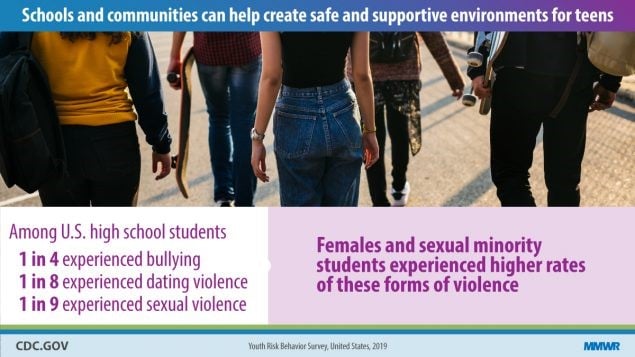
2. Risk Factor Identification (What is the cause?)
After we’ve identified the problem, the next question is, “What is the cause of the problem?” For example, are there factors that might make certain populations more susceptible to disease, such as something in the environment or certain behaviors that people are practicing?
People with certain risk factors may be more likely to experience violence. Meanwhile, protective factors can help buffer people from violence. A combination of individual, relational, community, and societal factors contributes to the risk of becoming a perpetrator of intimate partner violence. Understanding these multilevel factors can help identify various opportunities for prevention. Learn more about Risk and Protective Factors for Perpetration.
The video above, Moving Forward, humanizes both types of factors by using actors on a stage to show how people can move up or get held back in life, depending on positive or negative impacts. It will ultimately show how increasing what protects people from violence and reducing what puts people at risk for it benefits everyone.
Risk factors for dating violence include individual, peer, partner, parent, and neighborhood influences. Preventing dating violence requires a comprehensive community-driven strategy to stop violence before it starts.
3. Intervention Evaluation (What works?)
Once we’ve identified the risk factors related to the problem, we ask, “What intervention works to address the problem?” We look at what has worked in the past in addressing this same problem and if a proposed intervention makes sense with our affected population.
CDC uses a four-level social-ecological model to better understand violence and the effect of potential prevention strategies. This model considers the complex interplay between individual, relationship, community, and societal factors. It allows us to understand the range of factors that put people at risk for violence or protect them from experiencing or perpetrating violence. The overlapping rings in the model illustrate how factors at one level influence factors at another level. Besides helping to clarify these factors, the model also suggests that in order to prevent violence, it is necessary to act across multiple levels of the model at the same time. This approach is more likely to sustain prevention efforts over time and achieve population-level impact.
A technical package is a compilation of a core set of strategies to achieve and sustain substantial reductions in a specific risk factor or outcome. Technical packages help communities and states prioritize prevention activities based on the best available evidence. CDC developed a technical package, Preventing Intimate Partner Violence Across the Lifespan: A Technical Package of Programs, Policies, and Practicespdf icon that describes strategies and approaches that are based on the best available evidence for preventing intimate partner violence (IPV), including TDV. The package includes multiple strategies that can be used in combination to stop IPV and TDV before it starts.
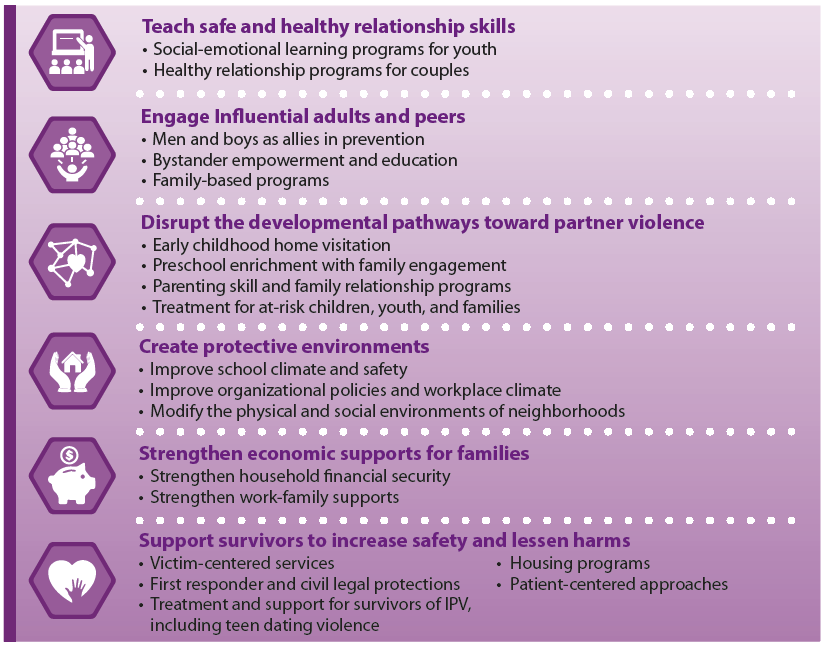
4. Implementation (How did we do it?)
In the last step, we ask, “How can we implement the intervention? Given the resources we have and what we know about the affected population, will this work?”

In response to growing concern from the public and policymakers about the risks of teen dating violence, between 2009 and 2011, CDC developed Dating Matters®: Strategies to Promote Healthy Teen Relationships. Dating Matters is a comprehensive adolescent dating violence prevention model. It includes multiple integrated prevention strategies that address risk factors for youths and their families, schools, and neighborhoods with demonstrated effects on adolescent dating violence, bullying, and peer violence in middle school. CDC recognized that public health organizations, like local health departments, offer unique resources for delivering comprehensive, community-level prevention strategies due to their access to multiple sectors and populations.
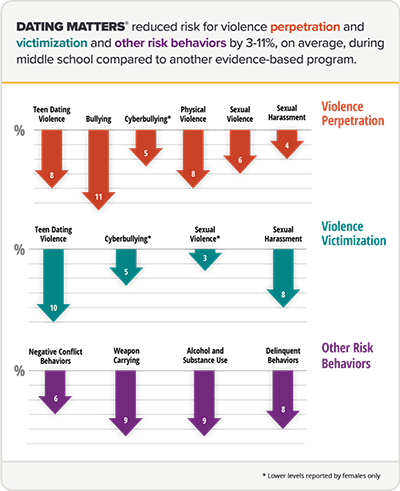
To find out if Dating Matters helps prevent teen dating violence, CDC compared youth who participated in Dating Matters to those who participated in another evidence-based prevention program (Safe Dates). CDC found that during middle school, students in schools offering Dating Matters reported lower levels of teen dating violence perpetration and victimization and lower use of negative conflict resolution strategies than students in comparison schools. Teen dating violence outcomes were examined only for those who reported dating before or during middle school. Middle school youth who participated in Dating Matters also reported lower levels of:
- Bullying perpetration
- Cyber-bullying perpetration and victimization (females only)
- Physical violence perpetration
- Weapon carrying
- Alcohol and substance use
- Delinquency
- Sexual violence perpetration and sexual violence victimization (females only), and
- Sexual harassment within and outside of dating relationships
As part of a five-year demonstration project, CDC funded four local health departments in communities across the country to implement Dating Matters. These local health departments and their partners brought Dating Matters to 46 middle schools with more than 36,000 youth, nearly 1,000 parents, and more than 300 educators. You can learn more about each of the communities and their successes with Dating Matters by visiting Dating Matters Success Stories.
For more information about implementing Dating Matters, visit:
As you can see, using The Public Health Approach helps public health professionals identify a problem, find out what is causing it, and determine what solutions/interventions work. Learn more about the Public Health Approach to Violence Prevention.
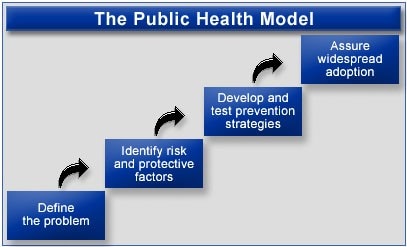
Special Feature – Teen Dating Violence
CDC designed i2i: What R U Looking 4? ® as a component for the Dating Matters comprehensive prevention model. It was developed based on communications best practices as well as theoretical models of behavior change. Formative research was conducted to:
- Explore knowledge, attitudes, and behaviors of the primary audience (11- to 14-year-olds) toward dating and relationships
- Test messages and concepts with youth
- Survey communities on capacity to implement a youth communications program
- Analyze the preferences of youth-focused audiences
Review literature on communication campaigns geared towards similar audiences on sensitive topics and key influencers of high-risk, urban youth
The i2i content was developed through co-creation workshops with youth to ensure authenticity as a credible source. The research suggested that communication campaign materials, such as social media messages, developed by youth for youth may be perceived as more authentic and credible by young teens. Therefore, the i2i brand is designed by and for youth, to appeal directly to them in order to increase the chances that they would hear and listen to the messages.
The i2i materials below are part of the Dating Matters program and are meant to be used by teens to learn about healthy relationships. You can also visit https://wwwn.cdc.gov/pubs/CDCInfoOnDemand.aspx and type “i2i” in the search box to view and download them.
i2i Ambassador Handbookpdf icon
What Are You Looking 4 Fortune Tellerpdf icon
Comic Book: Alex the Accidental Love Doctorpdf icon
Out of the CDC Museum Collection
Although not specific to teen dating violence, this month, we are featuring historic scanned articles representing the earliest CDC work in the field of violence prevention. From 1979-81, Atlanta was gripped by a series of unsolved child murders and a number of missing children cases, known locally and nationally as the “missing and murdered children.” Most of the victims were boys between the ages of seven and fourteen, and all were African American.
As concerned as other Atlantans, CDC scientists offered to investigate these incidences of violence by using classic techniques of epidemiological detective work. Not an attempt to identify the killer or killers, the study set out to determine common risk factors among the victims. The goals were to predict which of Atlanta’s other children might be likely targets, and to recommend preventive measures in high-risk communities.
These articles highlight the work done.
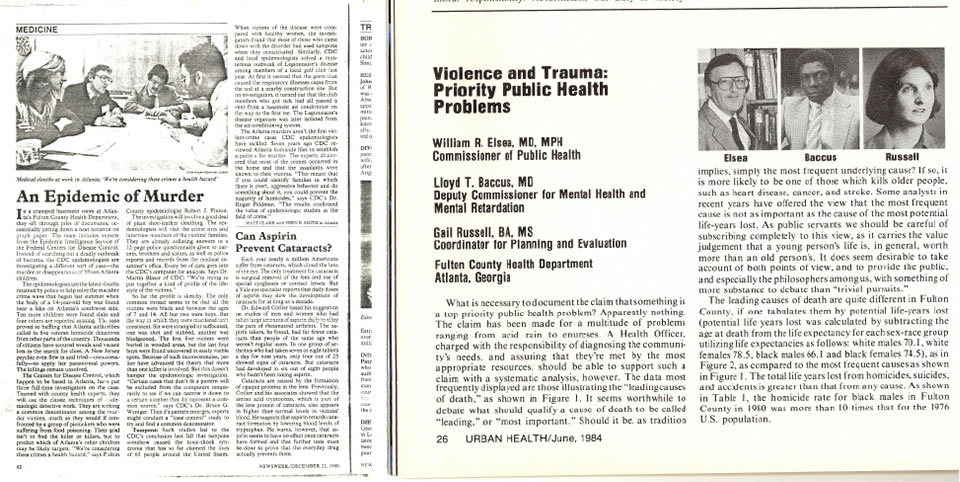
This work was one of the catalysts that led to the establishment of CDC’s Violence Epidemiology Branch in 1983 as we can see below from the CDC Museum’s online CDC Timeline exhibit. Along with other violence studies, it demonstrated that the tools of public health can be applied to violence and its prevention.
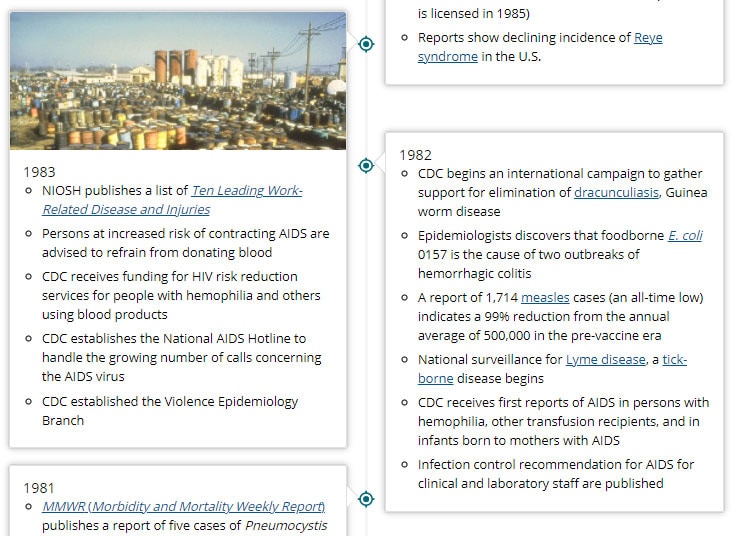
In 1992, the National Center for Injury Prevention and Control was formed, with the mission to prevent injuries and violence and reduce their consequences. See the CDC’s Work – Teen Dating Violence section above to learn more.
Newsletter Activities
All March 2021 Teen Newsletter winners will be announced 03/30/21 during the Zoom – see individual deadlines below, as applicable.
Don’t forget! The CDC Museum Public Health Academy Teen Newsletter has a new newsletter activity prize category: Future CDCer.
To qualify for Future CDCer, you must participate in all newsletter activities (scavenger hunt—Goosechase, Zoom, social media challenge, Ask a CDCer, and pre-Zoom game—Kahoot). All that qualify will be entered into a prize drawing for a CDC Museum Public Health Academy t-shirt.
*The following newsletter activities: Scavenger Hunt, Zoom, and Social Media Challenge are available for your participation anytime – even after deadlines. To be eligible for prizes you must complete activities by the deadline.
Want to do a fun digital scavenger hunt?
Time: ~20 min to complete
Complete all missions by 03/29/21 11pm EST, for prize drawing.
See below for more details.
Want to learn more from CDCers who work on teen dating violence?
Join us for an exclusive Zoom on 03/30/21 at 8pm EST.
Advance registration required. All who register by or on 03/30/21 3pm will be entered into a prize drawing.
Watch the teen dating violence Teen Talkexternal icon.
February was National Teen Dating Violence Awareness and Prevention Month.
The CDC VetoViolence Facebook page is a social media community and resource for stopping violence before it starts.
Share this short videoexternal iconexternal icon about Dating Matters® on your social media, @VetoViolence.
Submit a screenshot of your post by 03/29/21 11pm EST to be entered into a prize drawing.
Click for instructions and to submit your postexternal iconexternal icon.
Do you have a question for a CDCer who works on teen dating violence?
Submit your question for the teen dating violence experts who will be joining the Zoom on 03/30/21 at 8pm EST.
If your question is selected, you will get a shout out on the live Zoom and a prize.
Please do not submit questions that are answered by reading this newsletter.
Click to submit your question(s)external iconexternal icon by 03/29/21 11pm EST.
CDCM PHA Teen Newsletter Scavenger Hunt
March 2020
Step 1: Download the GooseChase iOS or Android app
Step 2: Choose to play as a guest
Step 3: Enter game code – X386WK
Step 4: Enter password – CDC
Step 5: Enter your email as your player name (this is how we will contact you if you are the prize winner)
Step 6: Go to https://www.cdc.gov/injury/features/dating-violence/index.html to complete your missions
Tips for Winning:
- All answers are found on the website – see Step 6.
- Open-ended answers and photo submissions are evaluated for accuracy.
- Complete all the missions by 03/29/21 11pm EST, to be entered into a drawing for a prize.
- Make sure your player name is your email.
Have fun!


